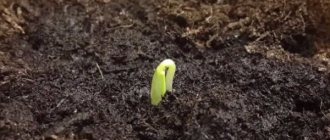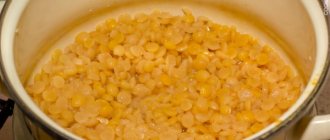Remember when you grew your first beans? Did you wrap the beans in a wet cloth, watch how the root hatched and the bean flaps turned into leaves, how the first real leaf appeared, how your vine began to grow, curl, and bloom brightly? And then you harvested the first harvest, carefully peeled the beans from the pods, and put them in storage. Spotty, clean, shiny, beautiful beans, carefully grown by your hands, were left to winter in the closet.
First bean harvest
Spring, you are getting ready to grow a new rich harvest, you open a bag of seeds, and there... Do you remember your feelings? Your beautiful beans are eaten away by round tunnels, swarming with beetles, and there is nothing but dust all around! Disgust, disappointment, anger! The harvest is irretrievably lost. How did it happen? What went wrong? Why are there bugs in the beans? Who is this bean beetle? Let's discuss and properly prepare for the next season.
There are bugs in the beans
Main pests of beans, prevention and control of them
Pests lie in wait for legumes at all stages of their life. The sprout fly feeds only on young sprouts and parasitizes on the roots of beans. Slightly grown stems and young leaves become prey for slugs. Aphids attack the adult leaves of the plant, sucking out all the juices from them. Mature pods with seeds are attacked by bean weevil. These are not the only, but the most common pests of beans. Let's take a closer look at them.
Bean grain
A heat-loving small beetle from the caryopsis family, only 2-5 mm in size, feeding mainly on mature beans. If you look at the insect under a magnifying glass, it seems quite cute: a small beige body completely covered with copper-colored hairs, short spotted wings, tenacious legs with sharp teeth. It does not tolerate cold at all, so it overwinters in granaries or other rooms with temperatures above +15°C. In winter, it feeds on beans or other grains. In the wild it produces 2-3 offspring per year; in storage or residential conditions it reproduces year-round. After overwintering, the beetle goes in search of food, flying up to 3 km a day in search of beans. Until the beans are ripe, they are content with their leaves and flower pollen, but can live completely without food for up to three months.
Bean grain
The bean weevil causes colossal harm to plants, as it damages not only the grains, but the flowers and leaves of legumes, preventing them from fully developing and bearing fruit. If beans are infested with bugs, the crop can be considered completely lost. The female gnaws through the pod and lays up to 20 eggs, only 20 microns in size, under the skin of the bean, from each of which mobile larvae hatch after 2 weeks. They feed on grain tissues and move inside it using legs, thus forming tunnels. After another 3 weeks, the larva pupates, later turning into a young beetle. The beetle emerges from the grain, gnawing a neat round hole in it. The cycle repeats...
So, you discovered that there are bugs in your beans. What to do?
If a pest is found in a summer cottage, it is necessary to remove all weeds and spray the insecticide Metafox or Decis on the crops. After 10 days, repeat the treatment.
If you have already found it at home, you need to carefully examine each bean and ruthlessly throw away all damaged and questionable specimens. Dry the remaining beans in the oven and store them according to the rules, which we will discuss in more detail below.
Sprout fly
A small midge, no larger than a bean grain (on average 3-6 mm), parasitizes legume seedlings. Outwardly, it is no different from the houseflies we are familiar with. The hairy body consists of a small head with huge eyes, a chest and a gray abdomen. The forehead is decorated with small mustaches. These are the insect's olfactory organs.
If the sprout fly does not find beans, it is content with other garden plants. Midges appear in April-May and find a mate of the opposite sex. After successful fertilization, many small white eggs are laid in the ground. They die in dry soil, but if you plant the seeds, water and fertilize the soil, the eggs turn into larvae in 9 days. The larvae penetrate the germinating beans and damage the root and stem. It is unlikely that the plant will be saved.
Sprout fly
Flies are extremely fertile, and their larvae are voracious. A newborn transparent larva, only 1-2 mm long, after 20-30 days of active growth and feeding on the tissues of germinating beans, reaches a height of 7 mm, thickens and turns into a mobile pupa. When the temperature drops, the pupa moves into the soil and buries itself at a depth of 10 cm, surviving the cold in this state. When spring comes, it turns into a midge, and the cycle repeats. In one summer, 3 generations of midges fly out of the ground: in April-May, June, July.
You can destroy the sprout fly with insecticides containing phosphorus, or simply plant already grown seedlings in the ground, to which the midge will not cause significant damage.
Sprout fly larva damaged beans
Slugs
A slug is a small, wet, soft-bodied pest that looks like a snail without a “house” on its back. Reaches a size of 5 mm, feeds on all parts of the plant. Since slugs are moisture-loving, in dry weather they take refuge under leaves, boards, cellophane and other objects that retain moisture. The appearance of a slug leads to the death or weakening of the entire vine, since it is omnivorous: it eats leaves, stems, flowers, and young pods with its teeth - using graters.
Slugs
To get rid of slugs, you need to properly dry the soil and remove all natural hiding places for parasites. In low humidity conditions, slugs die within a few days. To combat them, you can cover the soil with dried nettle, which will repel pests.
You can also use the original folk method of luring slugs with beer. To do this, you need to bury a small plastic bottle half filled with beer in the ground near the bean plantings. The neck of the bottle should not rise too much above the soil surface; the lid has been removed. Attracted by the smell of beer, the slugs will move into the bottle, but will not be able to get out. After a few days of repeating this procedure, all the slugs will be trapped.
Aphid
Aphids are such common insects that they are familiar even to people far from country life. Among the one and a half thousand varieties of this pest, the most dangerous for legumes is the melon aphid. Small parasites can appear seemingly from nowhere; the female molester is very active due to the presence of wings. Aphid colonies can start on one plant and quickly spread throughout the entire area of the garden. The insect uses a sharp proboscis to make a puncture in the tissue of a leaf or stem and sucks out all the liquid contents. The leaf curls and dries.
melon aphid
To get rid of aphids, you need to treat the plants with a soap solution or a solution of ash, which is diluted in a proportion of 2 cups per bucket of water.
Whitefly
A white, moth-like, almost microscopic (1 mm) insect. It is visible only because whiteflies are numerous.
The pest prefers greenhouses, but in warm weather it also goes into open ground.
It is classified into a separate family - whiteflies. Polyphage, polyphagous insect. The flat, pale green larva does not reach a millimeter even before pupation.
It only harms beans if they are grown in seedlings and the seedlings are grown in a greenhouse. There it attaches to the leaves from below and feeds, oppressing young plants.
The whitefly does not tolerate open ground well. If beans are sown in the ground, this is the most reliable protection against the pest.
If the seedling method is necessary, simply freeze the greenhouse in winter. The whitefly will not survive.
Preparing beans for storage
So, we have defeated all garden pests, collected a good harvest of beans, and are preparing to store them. First of all, the pods need to be dried. You can leave them in the sun if the climate allows, or spread them out on a clean cloth at home. Once dry, they will begin to open on their own. This is the optimal time for peeling.
The extracted beans must be carefully inspected and only absolutely healthy, undamaged specimens must be selected for storage. If you do not plan to use the seeds for planting, they must be heated in the oven for five minutes at a temperature of 90°C. This procedure will make your beans dry and unable to germinate. There is another way to get rid of bugs in beans - freezing for 72 hours at minus 18°C. After such a procedure, pests will have nothing to start from!
Drying the bean pods
What harm do parasites cause?
The harm directly depends on the type of parasite. A pest that settles directly on the plant causes the leaves to dry out. The plant will not be able to further grow and develop. There will be no harvest.
The most common pest is the bean weevil. The parasite lays eggs on mature beans. This leads to the appearance of through holes in the grain. The representative lays a clutch of eggs in the existing holes. Pupation also occurs there.
There are up to 20 larvae in one bean. The grain becomes unsuitable for food purposes. Even one infected grain can cause the death of the entire crop. Affected beans are completely empty inside.
The parasite can spread to other foods.
Saving bean seeds at home
If there is no pantry or cellar, you can store the harvest in a city apartment. The optimal place would be a refrigerator with a temperature of plus 7°C or an insulated loggia in winter. Beans should not be kept in the cold for a long time; they may lose moisture and some of their taste. When stored at room temperature, the seeds may germinate if they have not been previously frozen or heated in the oven.
The grains selected for storage can be placed in glass jars and then closed with airtight lids. Lids should not allow air to pass through. You can use fabric bags that have been previously washed, soaked in saline solution, and dried with an iron.
Storing beans in a jar
Store beans in a bag
Description of the insect
The bean weevil is a small bug that is the most dangerous pest for this legume. This copper-brown weevil grows up to 3-5 mm in length.
Appearance of bean grain
If you do not control bean pests, you can lose more than half of the entire harvest of this crop.
What to do if beans have bugs
If there are bugs in the beans, it is better to throw them all away. There is no good reason to use kernel-damaged beans. It is not suitable for planting, since it is impossible to accurately determine the presence or absence of pests in apparently undamaged grains. If you really want to plant damaged seeds, you will get weak and diseased seedlings that will not give you a good harvest. In addition, create conditions for the parasite to reproduce in your area.
Bugs in a can of beans
If there are only a few noticeable insects, and you really want to save at least part of the harvest for soup, you can sort through all the beans, examine them under a magnifying glass, and throw out any that are suspicious or obviously damaged. Freeze the remaining ones at minus 18-20°C for three days or heat them in the oven at +90-100°C , then store them using the technology described above.
Plant protection methods
To preserve the harvest, it is important to protect plants from these diseases, the carriers of which are often insect pests. It is also of great importance to create optimal conditions for rapid growth and good fruiting.
Prevention
To protect bean plantings from possible infection, timely work is carried out to prevent diseases and pest attacks. Usually folk remedies are used for this. To repel insects, the soil around the plants is mulched with nettle grass. For the same purpose, irrigating plantings with a decoction of garlic is sometimes used.
For planting, high-quality seed material of varieties with high immunity is used. Bean beds are arranged taking into account the rules of crop rotation. During sowing, seeds are immersed only in heated soil and shallowly. Since beans quickly deplete the soil, mineral and organic fertilizers are applied several times during the growing season.
Active methods of protection
During the growing season, they monitor how well the plants are developing. This helps to identify possible diseases and pest infestations at an early stage. Then, by starting plant treatment in a timely manner, you can save most of the harvest.
Chemical treatment
If traces of infection by disease or insects are detected, treatment with modern chemicals begins immediately. It is most effective to treat plants with Bordeaux mixture or oxychloride. Until the plants bloom, biological preparations “Guapsin”, “Trichodermin”, “Planriz” will help cope with the infection.
Why do bugs appear and how to defeat them?
In nature, there is no miraculous phenomenon of insects out of nowhere. Pests must come from somewhere, so your case is no exception. There are two possible options:
- or the eggs of the beetles were originally laid in some beans, and became active during storage
- or you bought and brought home other legumes affected by the weevil.
To prevent this from happening, follow these simple tips:
- carefully inspect all beans being stored
- throw away any damaged or questionable copies
- When growing, use insecticides promptly. It’s easier to kill a pest at your dacha than to select one grain at a time at home
- Before storing, heat the legumes (freezing or heating in the oven)
- do not store beans in a warm place
- Place sharp-smelling plants next to the legumes - dill seeds or garlic
- Place the beans in different jars and close the lids tightly.
- Periodically inspect your supplies to notice the first signs of pests. Bugs will definitely show themselves in the beans (we have already described how to get rid of them above).
How not to lose your bean harvest
How pests get into the kitchen
Even hermetically sealed tight bags do not guarantee that little uninvited guests will not appear in the closets. And let’s not even talk about cardboard boxes and fabric bags - insects prefer these types of containers more than others.
Why are insects dangerous in the kitchen?
- Rapid growth in numbers: small cereal bugs and other insects settle in beans, pasta, flour, starch, cereals and multiply exponentially, rendering food supplies unusable.
- Difficult to get rid of: even if you immediately throw away the affected products when pests are discovered, microscopic larvae may remain in the crevices of kitchen cabinets, seams and lids of storage containers, which will lead to a new wave of insect spread.
- A number of kitchen guests can pose a threat to human health. For example, cereals affected by the bread borer cannot be used in cooking.
- The appearance of bugs at home causes natural discomfort and deprives the home kitchen of its usual comfort and safety.











